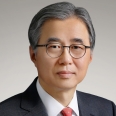Introduction
The United States “Pivot” or “Rebalance” to Asia is widely considered to have begun with then-Secretary of State Hillary Clinton’s October 2011 article in Foreign Policy magazine, titled “America’s Pacific Century.” The article set forth one of the most comprehensive blueprints for the future of US foreign policy. The beginning of the Pivot, however, dates back to the early days of the Barack Obama administration during which the US signaled its renewed commitment to multilateralism and economic engagement with Asia. The Obama administration’s signing of the Association of Southeast Asian Nations (ASEAN) Treaty of Amity and Cooperation in 2009 and its joining of the East Asia Summit (EAS) in 2010 were both concrete steps taken by the US under the banner of the Pivot to Asia. Since then, the Pivot was the defining theme of the Obama administration’s policy towards Asia.
The election of Donald Trump in November 2016 signaled a major change in America’s approach to the region. Trump’s calling into question the efficacy of traditional alliances with South Korea and Japan, his landmark phone call with Taiwan president Tsai Ing-wen, and his withdrawal from the TPP have all signaled that he intends to transform America’s relations the region. The Trump administration’s approach to Asia may have taken a different tone, but the region’s significance to US foreign policy will not diminish.
After a year, there are mixed signals from the Trump administration to Asian countries. On the one hand, the administration has emphasized the primacy of US interests under its “America First” banner. Rather than engaging Asian countries widely, the administration has been heavily concerned with China and North Korea while references to liberalism, democracy, or human rights have been noticeably absent in its Asia policy. On the other hand, there have been moves to re-engage with some Asian countries which were initially overlooked by the Trump administration in the first half of 2017. Leaders of some Southeast Asian countries were invited by President Trump to hold summits. Although not entirely successful, President Trump participated in the annual US-ASEAN summit and East Asia Summit at the end of 2017. There have also been increasing references by the president and his top officials regarding the Indo-Pacific as a US strategy towards the wider Asian region.
This project is designed to provide policy recommendations for current and future US administrations to pursue in Asia. Several studies have already been put forth for what the new administration should do in Asia, yet these are primarily focused on what the US wants from an American perspective. This research project is unique in that it reflects the perspectives and recommendations of Asian experts from across the region. It provides a frank review of the Pivot over the past eight years and surveys the perceptions and interests of different Asian countries towards the US; in short, it is about what Asia wants.
Table of Contents
■ Preface
■ Acknowledgements
■ Executive Summary
■ Introduction
■ Overall Assessments of the Pivot to Asia
■ The Military Pivot
■ The Economic Pivot
■ The Diplomatic Pivot
■ The Pivot and China
■ Understanding Asia
■ Policy Recommendations
■ Conclusion
* The views expressed herein are solely those of the authors and do not reflect those of the Asan Institute for Policy Studies.

 Facebook
Facebook Twitter
Twitter
